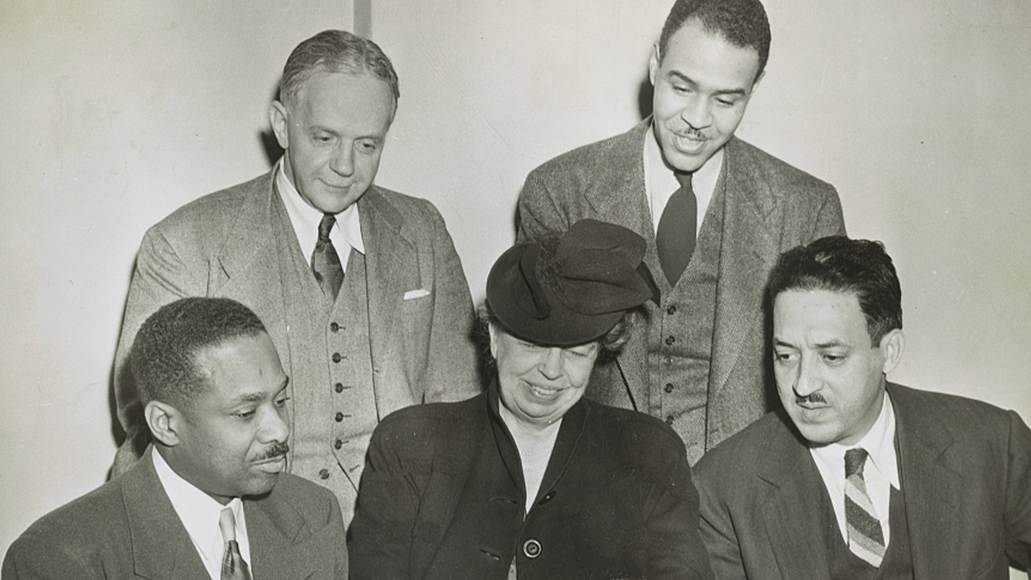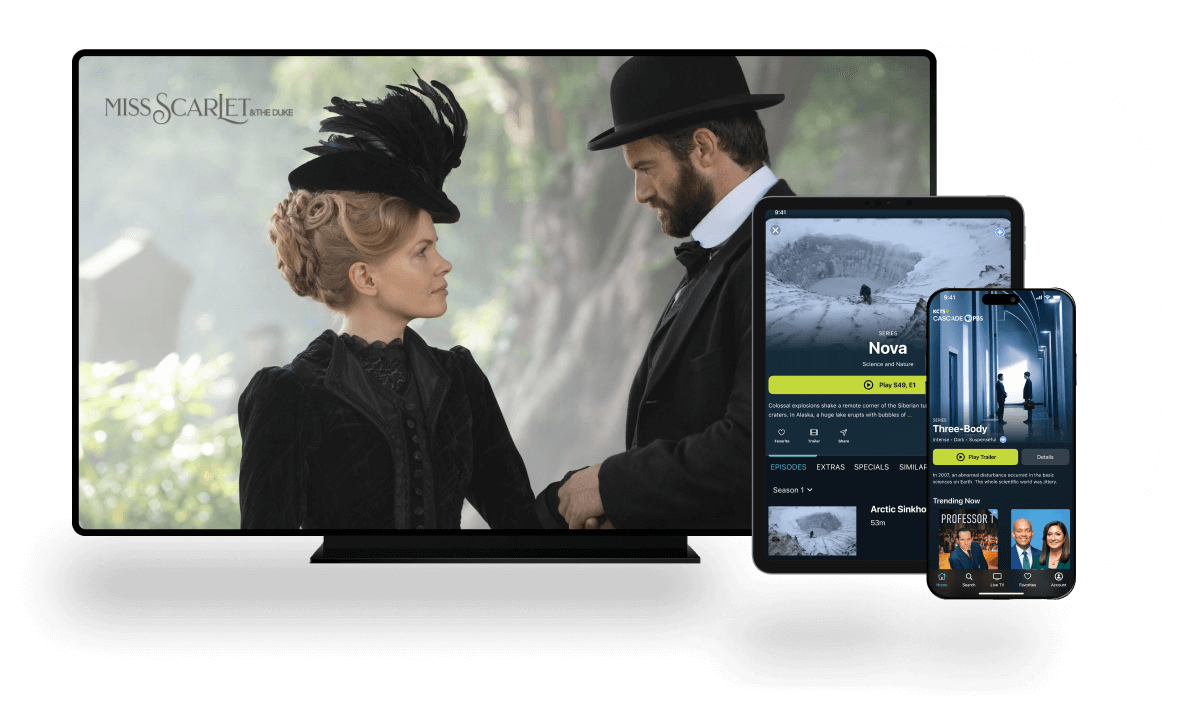
American Experience
Gerald Ford's First White House
Show title: American Experience
Video title: Gerald Ford's First White House
Video duration: 1m 37sVideo description: When President Gerald Ford was inaugurated in 1974, the Nixons hadn’t had time to move out of the White House yet. So for ten days, the “White House” was an unassuming colonial home in suburban Alexandria, Virginia.
Watch Clip

Black Cowboys on the Silver Screen
6m 39s
Take a minute and picture the cowboy. He’s got on his hat and boots, maybe a gun on each hip, and, of course, his well-worn blue jeans.
Watch Clip

Chapter 1 | Riveted: The History of Jeans
11m 41s
Riveted: The History of Jeans reveals the fascinating and surprising story of the iconic American garment. They’re more than just a pair of pants — America’s tangled past is woven deeply into the indigo fabric. From its roots in slavery to the Wild West, youth culture, hippies, high fashion and hip-hop, jeans are the fabric on which the history of American ideology and politics are writ large.
Watch Clip

Levi Strauss
53s
You might think that Levi Strauss invented jeans. In reality he is the man who brought them to market and made millions.
Watch Clip

Origins of Denim
54s
Denim is the quintessential American fabric. Yet its possible origins are spread across the globe.
Watch Clip

When Blue Jeans Got a Bad Name
7m 14s
Over the fourth of July weekend in 1947, 4,000 motorcycle riders, wearing leather jackets and blue jeans roared into Hollister, California for a three-day rally. The small town woke to motorcyclists in an unusual uniform: leather jackets and blue jeans.
Watch Preview

Trailer | Riveted: The History of Jeans
1m 45s
Discover the fascinating story of this iconic American garment. From their roots in slavery to the Wild West, hippies, high fashion and hip-hop, jeans are the fabric on which the history of American ideology and politics is writ large.
Watch Preview

Roberto Clemente Preview
30s
Born in Puerto Rico, Clemente was an exceptional baseball player and humanitarian whose career sheds light on larger issues of immigration, civil rights and cultural change. He would die in a tragic plane crash.
Watch Clip

Chapter 1 | Citizen Hearst, Part 1
9m 52s
Explore the life of William Randolph Hearst, the pioneering media mogul and inspiration for Orson Welles’ Citizen Kane.
Watch Clip

Yellow Journalism
7m 38s
On the evening of February 15, 1898, a massive explosion tore through the battleship U.S.S. Maine in Havana Harbor, Cuba. The explosion sank the vessel, killed over 260 sailors and shocked the American public. Days later, William Randolph Heart’s newspaper, The New York Journal, ran a sensational headline.
Watch Clip

Chapter 1 | Citizen Hearst, Part 2
9m 45s
William Randolph Hearst’s media empire included 28 newspapers, a movie studio, a syndicated wire service, radio stations and 13 magazines.
Watch Preview

Trailer | Citizen Hearst
1m 45s
Explore the life of William Randolph Hearst. The model for Orson Welles’s Citizen Kane, he controlled a vast media empire, wielded unprecedented power and influence, and forever transformed the media’s role in American life and politics.
Watch Clip

Joseph Pulitzer
1m 18s
Joseph Pulitzer was a newspaper editor and publisher. In 1883 he moved to New York City, where he purchased The New York World.
The World became the most popular newspaper at the time, printing a quarter million copies on weekday mornings.
Watch Clip

Millicent Hearst
1m 18s
Millicent Hearst was married to the media tycoon William Randolph Hearst. She met W.R. in New York City in 1896, when he was 33 and she was a 16-year-old showgirl.
Watch Clip

Marion Davies
1m 18s
Marion Davies was the mistress of media tycoon William Randolph Hearst. Hearst used his influence and wealth to launch a film career for Davies.
Watch Clip

William Randolph Hearst
1m 18s
William Randolph Hearst believed he was not reporting history but was instead creating it. By the end of the 1920s, Hearst owned newspapers in almost every major city, as well as magazines and even radio stations.
Watch Clip

Sandra Day O’Connor: First Woman on the Supreme Court
1m 10s
During the 1980 presidential campaign, Ronald Reagan promised to nominate the first woman to the U.S. Supreme Court. He made good on that promise in 1981, when he announced Sandra Day O’Connor’s nomination.
Watch Clip

Chapter 1 | Sandra Day O'Connor: The First
9m 24s
Discover the story of the Supreme Court’s first female justice.
Watch Preview

Trailer | Sandra Day O'Connor: The First
2m 20s
The Supreme Court’s first female justice, Sandra Day O'Connor. A pioneer who both reflected and shaped an era, she was the deciding vote in cases on some of the 20th century’s most controversial issues—including race, gender and reproductive rights.
Watch Clip

Last Days in Afghanistan
10m 26s
In this exclusive conversation, AMERICAN EXPERIENCE’s executive producer Cameo George speaks with the acclaimed filmmaker about the parallels between the 1975 evacuation of Vietnam and the recent American withdrawal from Afghanistan, and the lessons that America’s history in Vietnam offer today.
Pagination
Supported by










